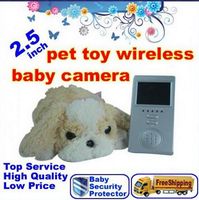
There are few experiences so exciting and nerve-wracking as being a new mom. Whether this is your first time being a parent or you are simply adding to your family, you are likely overwhelmed and wondering how to manage life with your new bundle of joy. Your baby is your first priority, but you also care about the environment and want to minimize the impact you are having. With the market of baby products claiming to be eco-friendly, this might seem easy, but you likely know it isn’t that simple. Being an eco-friendly new mom is a deliberate lifestyle choice.
With the right attitude and approach, you can be supermom and save the environment all at the same time. Simply being conscientious is half the battle, and for the rest of the struggle, the following tips should give some guidance. Get ready to save the world, one diaper at a time.
Consider Your Diaper Choice
Diapers, in fact, are one of the most important considerations for new moms. It is not shocking that disposable diapers may not be the best choice for the environment. They create massive amounts of waste and are generally not recyclable. Some suggest that cloth diapers are the better alternative, but according to the Washington Post, these are not necessarily any better. As a mom, it’s up to you to decide what works best for your baby and your family. While the environment is important, your child’s wellbeing is more important. Find the diaper that meets your eco-friendly standards.
Read the Baby Food Label
How often do you read the label of the food you are eating? Every day…or rarely? If you are like most people, you probably pay little attention to exactly what you are consuming, but you are likely far more careful when it comes to the food your baby eats. Not all baby food is created equal—some are filled with harmful and synthetic ingredients, while others are organically produced. Needless to say, one of these is better for both your baby and the environment. Choose the food your child eats wisely for the sake of their health and the environment’s.
Be Smart With Resources
Natural resources are limited. As a new mom, though, you may be relying on such resources heavily. Water is just one example. A new baby necessitates baths, additional laundry and plenty of other activities that take up more water than you might usually use. This might be fine were it not for the many areas experiencing droughts. Southern California is notoriously dry, and using excessive water can be irresponsible. Initiatives such as the Cadiz Water Project aim to remedy that, though, by providing sustainable access to water even throughout droughts. Still, you should use natural resources sparingly.
Invest in Sustainable Products
While buying the right products certainly won’t fix all of the environment’s problems, it is a good place to start. Shopping responsibly is an important undertaking, and this is especially true when you are a new mom selecting the products you will use for your baby. Investing in sustainable products means more than just buying items that are labelled “green,” though. It means researching companies, looking up reviews and educating yourself on the different products you are considering. This process can be overwhelming, but it is certainly worth it for both the environment and your new baby.
Be Aware of Community’s Needs
As a mom, you are automatically attuned to the needs of your child. Perhaps it is more difficult—and seemingly less important—to determine what the needs of your community might be. Immersing yourself in your community is a great way to build a support system as a new parent. You might consider, environmentally, what your community needs. Do you have access to sustainable produce, for example, through a farmer’s market? Is there consistent access to water, or are there issues complicating this? The Cadiz Water Project is a great example of community response to issues with resources.
Favor Hand-Made Over Store-Bought
One of the best ways to minimize your environmental impact is to ditch store-bought baby goods and go for hand-made. This is beneficial for so many reasons—of course, you are eliminating the wasteful packaging that so often accompanies items bought in a store. More importantly, however, you are creating completely unique artifacts of your child’s infancy. Rather than buying diapers, for example, sewing simple cloth nappies can be a simple alternative. There are a myriad of other ways for new moms to make the switch from store-bought to hand-made and support sustainability in the process.
Caring for a new baby is overwhelming, but it is also an incredible journey. Any parent who cares about the environment can be eco-friendly while also ensuring their child is nurtured and loved. Invest in your child and the environment by following these tips and becoming the environmentally-minded supermom you were meant to be.






















